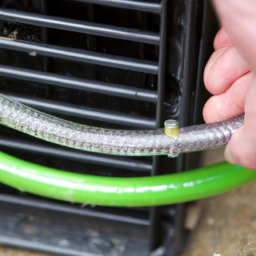How To Flush A Radiator Using a Garden Hose
Table of Contents []
How To Flush A Radiator With A Garden Hose
Introduction
Flushing your radiator with a garden hose is an essential task when maintaining a good running engine. Not sure how it's done? Look no further! This article will provide a step-by-step guide to draining and flushing your radiator using a garden hose. In addition, this article will provide relevant information on how to repair common radiator problems after the flush, plus a diagram clarifying exactly which parts need to be handled and in what order. So, let's get started!
Steps for Draining and Flushing Your Radiator
First and foremost, you must initially disconnect the garden hose from the radiator system. Next, close the radiator drain plug. Then, using a garden hose with a significantly high kPa pressure, carefully flush the radiator. Take special care to avoid damaging the cooling fins. Once completed, remove the radiator cap by turning it counter clockwise and let the engine cool down. Finally, disconnect the radiator fan and flush out the last bit of residual engine coolant.
Cleaning the Radiator
After completing the flush, check to see if the radiator has any bends, kinks, or collapses. If any of these exist, carefully straighten out the radiator with a pair of needle nose pliers. Also, check for any corrosion deposits by closely inspecting the radiator and removing any debris with an air gun.
Repairing Common Radiator Problems
If the radiator has a leak, feel for it by pressing a rag around the side or bottom of the radiator to soak up any excess fluid. If it is leaking, seal the leak with an appropriate sealant. If the radiator is clogged with rust, sand paper can be used to break it down. Once broken, remove the rust at least twice a season to keep it free of debris.
Regular Flushing to Maintain a Healthy System
Routine maintenance is essential when it comes to any engine or radiator. It is recommended that you flush out your radiator system at least twice a year to ensure the best possible performance. After flushing out the radiator, top up with anti-freeze and some distilled water.
Summarizing
Flushing out your radiator can be daunting, but this article guides you through the process step-by-step. Ultimately, flushing your radiator with a garden hose is essential to keep your engine running at its best. To maintain a healthy system, flushing your radiator at least twice a year and fixing any evidence of corrosion, leaks, and bends is a must.

Previous Page
Next Page
